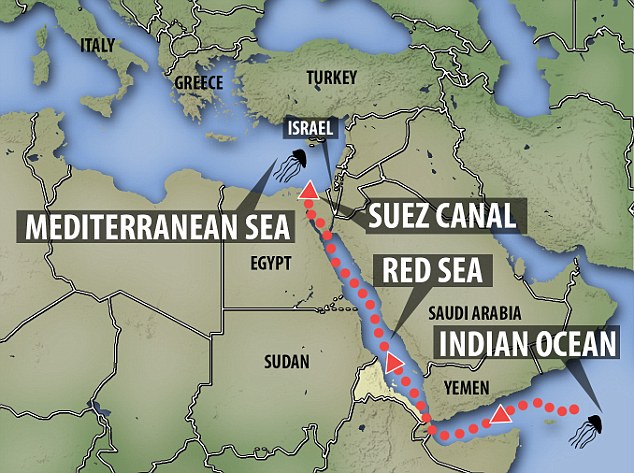Suez Canal
The Suez Canal is an artificial waterway in EGYPT that links the Mediterranean and the Red Seas. Cut across the Isthmus of Suez, a strip of land connecting Africa and western Asia, the canal made it possible for ships to travel from Europe to Asia and back without sailing all the way around Africa.
The Suez Canal was not the first waterway built across part of Egypt. In ancient times, the Egyptians dug a channel that ran from the NILE RIVER to the Red Sea. The Romans later lengthened the canal, but in A.D. 775 the Arab rulers of Egypt destroyed it.
As trade between Europe and Asia increased in later centuries, various European nations considered building a canal across Suez to shorten trade routes. Each time the project was considered too difficult. Finally, in 1854, Egypt authorized a French engineer named Ferdinand de Lesseps to construct a canal. Work began two years later under the management of the Suez Canal Company, an association of European and Egyptian shareholders that owned the rights to operate the canal for 99 years. At first, the company forced unpaid or poorly paid Egyptian peasants to dig the canal by hand. Later, in response to international criticism, the company hired European workers with heavy machinery to complete the job.

When it was completed in 1869, the canal measured 100 miles long, 30 feet deep, and 100 feet wide. Its route passed through four lakes and had eight major bends. Several hundred ships used the Suez Canal during its first year of operation. In following decades both cargo and passenger traffic steadily increased, especially after 1950, when oil was first shipped from Persian Gulf oilfields to Europe by way of the canal. In 1956 the Egyptian government took control of the canal, and it has been managed since that time by the Egyptian Suez Canal Authority. Egypt closed the canal twice, from 1956 to 1957 and again from 1967 to 1975, because of conflicts with nearby Israel. The canal's busiest year was 1966, with 21,250 transits, or passages.
Today, usage of the Suez Canal has declined somewhat. Although engineers widened and deepened the canal several times to a final measurement of 590 feet wide and 53 feet deep, many modern tankers are too large to travel through the canal. In addition, a pipeline now carries great quantities of oil across the Suez Peninsula. Still, the Suez Canal remains an important route for ships transporting agricultural products from North America and Europe to Asia and for carrying petroleum products from the Middle East to European refineries. Other common cargoes include cement, metals, and fertilizers. (See also Trade, Transportation.)